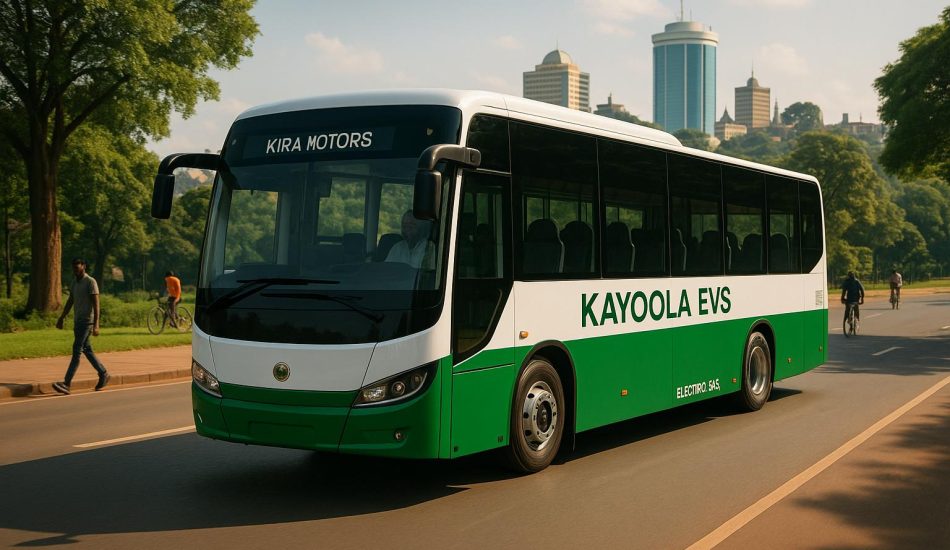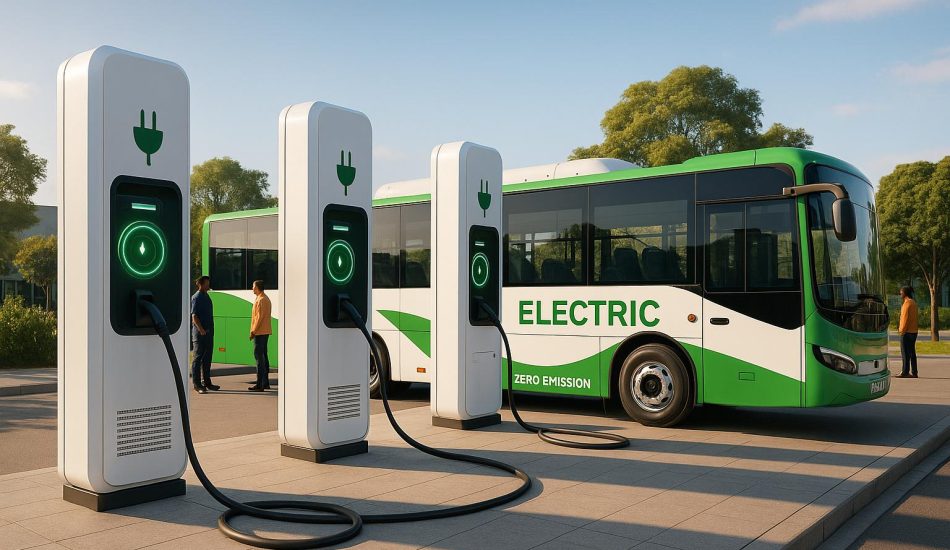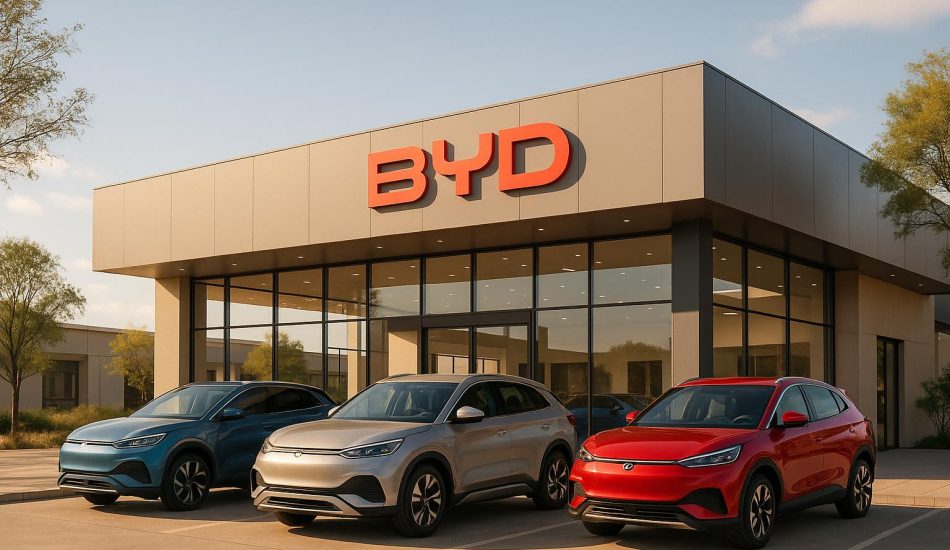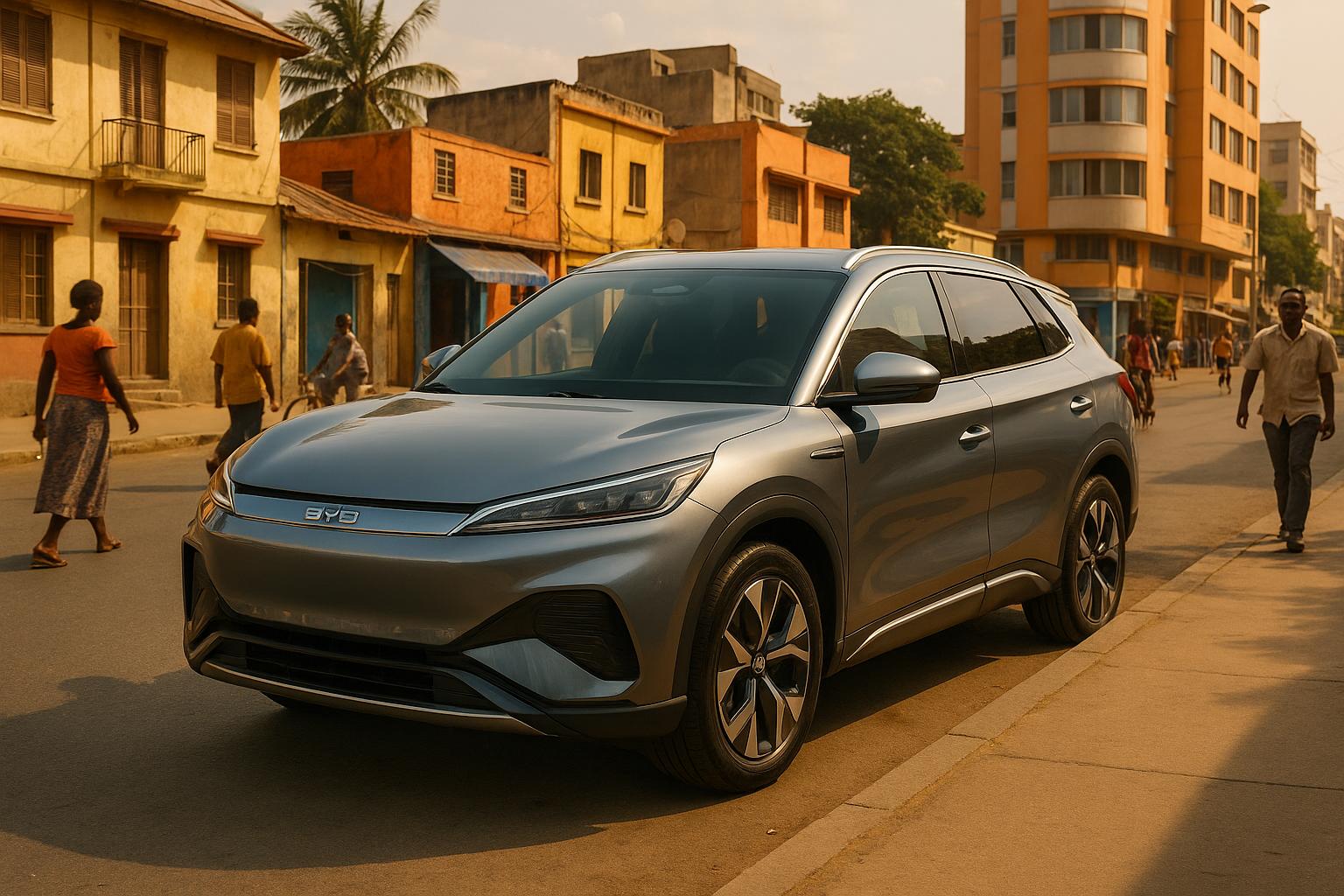
Chinese automakers BYD, GAC, and GWM are reshaping Africa’s EV market. Here’s what you need to know:
- Growth in Africa’s EV Market: EV sales in South Africa doubled in 2024, with Africa’s EV market projected to hit $209.9 million in revenue by 2025.
- BYD’s Strategy: BYD leads with 15% market share in South Africa, expanding dealerships, and offering affordable EVs tailored to local needs.
- GAC’s Focus: GAC targets Ethiopia and Egypt, emphasizing local production, government support, and EV models suited for African conditions.
- GWM’s Approach: GWM dominates South Africa, focusing on hybrids, affordable pricing, and potential local manufacturing.
Despite challenges like limited charging infrastructure and unreliable power grids, these companies are leveraging affordability, government partnerships, and tailored products to drive EV adoption in Africa.
| Company | Strengths | Weaknesses | Focus |
|---|---|---|---|
| BYD | Market share, dealership growth | Brand recognition, quality concerns | Rapid expansion |
| GAC | Government backing, local hubs | Smaller presence, partner reliance | Ethiopia, Egypt |
| GWM | South African leadership, hybrids | Slower growth, regional dependency | Gradual growth, affordability |
The African EV market is evolving fast, offering opportunities for automakers, governments, and consumers alike.
BYD to nearly triple South Africa dealers’ network by next year | REUTERS
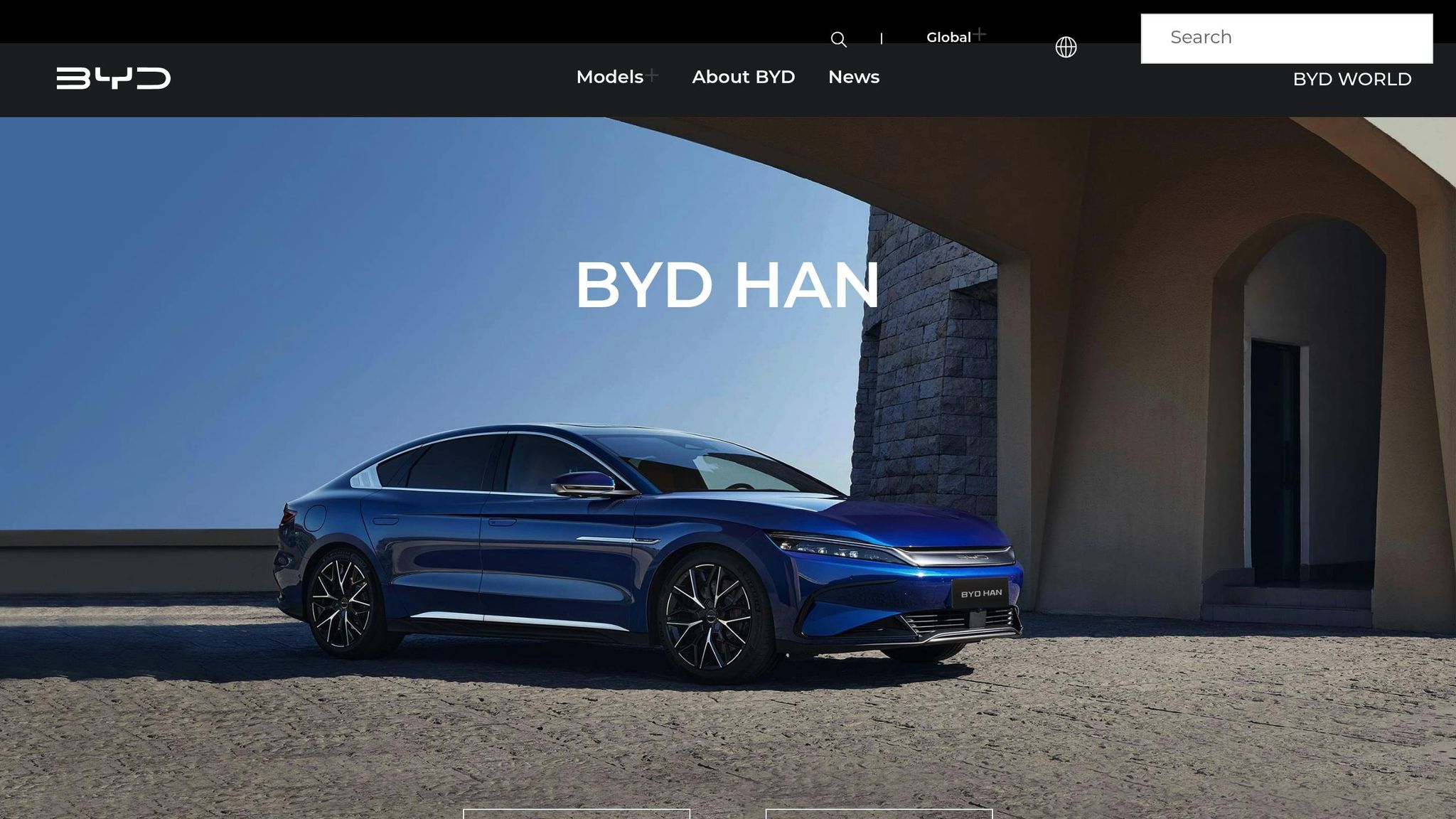
1. BYD
BYD is making significant strides in Africa, extending its influence well beyond vehicle sales. The company has established a presence in 17 African countries and regions, signaling its commitment to the continent.
Market Entry Strategy and Dealership Growth
BYD’s strategy focuses on rapidly expanding its dealership network while educating consumers about the benefits of new energy vehicles. In South Africa, the company aims to increase its dealership network from around 20 locations by the end of 2025 to between 30 and 35 by 2026. Steve Chang, General Manager of BYD Auto South Africa, highlights the importance of this market:
"South Africa is one of the most important automotive markets in the southern hemisphere – and probably the biggest in Africa. We want to educate and cultivate the market of South Africa and make sure that the South African consumers can catch up with the rest of the world".
Vehicle Lineup Designed for Africa
BYD has introduced a diverse range of models in South Africa, tailored to meet the unique needs of the region. These include the Atto 3, Dolphin, Seal, Shark 6, Sealion 6, and Sealion 7. The lineup addresses infrastructure challenges and caters to various market segments.
- Shark 6 Pickup: Priced at approximately $54,000, this vehicle offers a 670 km WLTP range, with 85 km in pure electric mode.
- Sealion 6 SUV: A plug-in hybrid designed for families, it delivers a range of up to 1,080 km (front-wheel drive) or 870 km (all-wheel drive) on a full tank. Prices range from $36,000 to $44,500.
- Sealion 7 SUV: A premium pure electric model, it features a maximum WLTP range of 482 km and fast DC charging, enabling a 10% to 80% charge in just 32 minutes. Prices range from $62,000 to $73,000.
These vehicles, designed with local conditions in mind, are helping BYD deepen its market presence through strong local partnerships.
Building Strategic Partnerships Across Africa
BYD has strengthened its foothold in Africa by collaborating with local distributors and automotive groups. For instance, in Gabon, the company partnered with LOXEA, a subsidiary of the CFAO Group, to officially launch its brand in June 2025. The event was attended by Gabon’s Minister of Trade, Gninga Chaning Zenaba. Yao Shu, Director of BYD’s African automotive sales division, emphasized:
"Gabon shares BYD’s vision of electrification and green transformation. Local car owners will benefit from our industry-leading new energy technologies, enjoying a high-quality driving experience and low-carbon travel options".
In Nigeria, LOXEA Nigeria introduced BYD vehicles in April 2025, establishing charging stations, maintenance services, and spare parts networks. Similarly, BYD inaugurated its first showroom in Zambia in partnership with Pilatus Electric Mobility Zambia (PEM) in September 2024.
Expanding Beyond Passenger Vehicles
BYD isn’t stopping at personal vehicles. The company is also making an impact in public and commercial transportation. In Rwanda, BYD collaborated with BasiGo to upgrade Kigali’s public transport system with electric buses.
Another notable partnership involves Ampersand, a Kigali-based EV company. In June 2024, Ampersand signed a deal with BYD to purchase batteries for building approximately 40,000 electric motorcycles by the end of 2026, targeting markets in Kenya and Rwanda. Josh Whale, CEO of Ampersand, explained the significance of this initiative:
"Converting taxi and delivery two-wheelers to EVs offers a compelling, cost-effective decarbonization solution. At the same time, this transformation will save millions of hardworking motorcycle riders six hundred dollars each a year, driving clean economic prosperity".
Global Success Driving African Growth
BYD’s international achievements are fueling its African ambitions. In May 2025, the company sold over 89,000 electric vehicles overseas – a 137.46% increase compared to the previous year. These overseas sales accounted for 23.28% of its total sales for the month. This strong global performance equips BYD to tackle Africa’s unique challenges through targeted investments and strategic planning.
2. GAC
GAC Motor is making significant moves in Africa, focusing on strategic regional hubs through local partnerships. Currently active in 76 global markets, the company’s expansion into Africa reflects its broader growth ambitions. This groundwork enables GAC to target key markets and establish localized production efforts.
Strategic Focus on Ethiopia and Egypt
GAC has pinpointed Ethiopia and Egypt as central to its African expansion. In Ethiopia, the company is tapping into strong government backing for electric mobility. Wei Haigang, President of GAC International, sheds light on their focus:
"Ethiopia stands out as one of our key strategic markets in Africa, particularly in East Africa. Ethiopia’s clear emphasis on electric vehicles and green mobility is a significant factor in our decision to enter this market".
Ethiopia’s government has prioritized electric vehicles (EVs), aligning with GAC’s ambition to secure 30% of the EV market by 2030. This aligns with Ethiopia’s national vision to have 500,000 EVs on the road by 2035, a move aimed at reducing the nation’s $6.6 billion fuel import bill from 2023.
Commitment to Local Manufacturing and Jobs
GAC’s plans for Africa go beyond selling vehicles; they include local production and assembly. In May 2025, the company partnered with Jameel Motors to initiate a production and assembly project in Egypt. This initiative is expected to generate an annual production value of over $80 million and create more than 1,000 jobs in the local supply chain. Mass production is set to begin in the second half of 2026.
Egypt, as the third-largest automotive market in Africa, offers a promising opportunity. With annual vehicle sales around 170,000 units, local assembly operations could lower costs by up to 20% while creating 5,000–10,000 jobs across the automotive ecosystem.
Electric Vehicles Designed for African Needs
GAC is rolling out electric models tailored to African markets. In Ethiopia, the Aion lineup will be introduced in partnership with Huajian Group, which will manage distribution and after-sales services nationwide. This collaboration also includes plans for local assembly and transferring technical expertise over time.
In Egypt, GAC plans to launch models like the Aion Y and Hyptec HT. Meanwhile, in South Africa, the company is expanding its EV offerings with the Aion Y electric crossover SUV and updated versions of its Emzoom and Emkoo ranges, which now include plug-in hybrid electric (PHEV) options. These models are designed to meet local needs, strengthening GAC’s foothold in the region.
Strengthening Dealer Networks and Market Reach
In South Africa, GAC is growing its dealership network from 28 to 40 locations by the end of 2025. Brian Smith, Marketing Director of GAC Motor South Africa, highlights the company’s dedication:
"The developments planned for 2025 reflect our long-term commitment to the market and to offering South Africans more choice in advanced, reliable mobility".
This expansion builds on GAC’s strong global performance, including a 96% year-on-year sales growth in 2024. By 2027, the company aims to reach 100 global markets and export 500,000 vehicles annually.
Building Trust Through Warranties
To address concerns about EV reliability, GAC is offering comprehensive warranties. Leslie Ramsoomar, Managing Director of GAC Motor South Africa, underscores this approach:
"This warranty is a powerful promise – a declaration of the confidence we have in our products. It’s about peace of mind, lifelong value, and building a brand that people can truly believe in".
sbb-itb-99e19e3
3. GWM
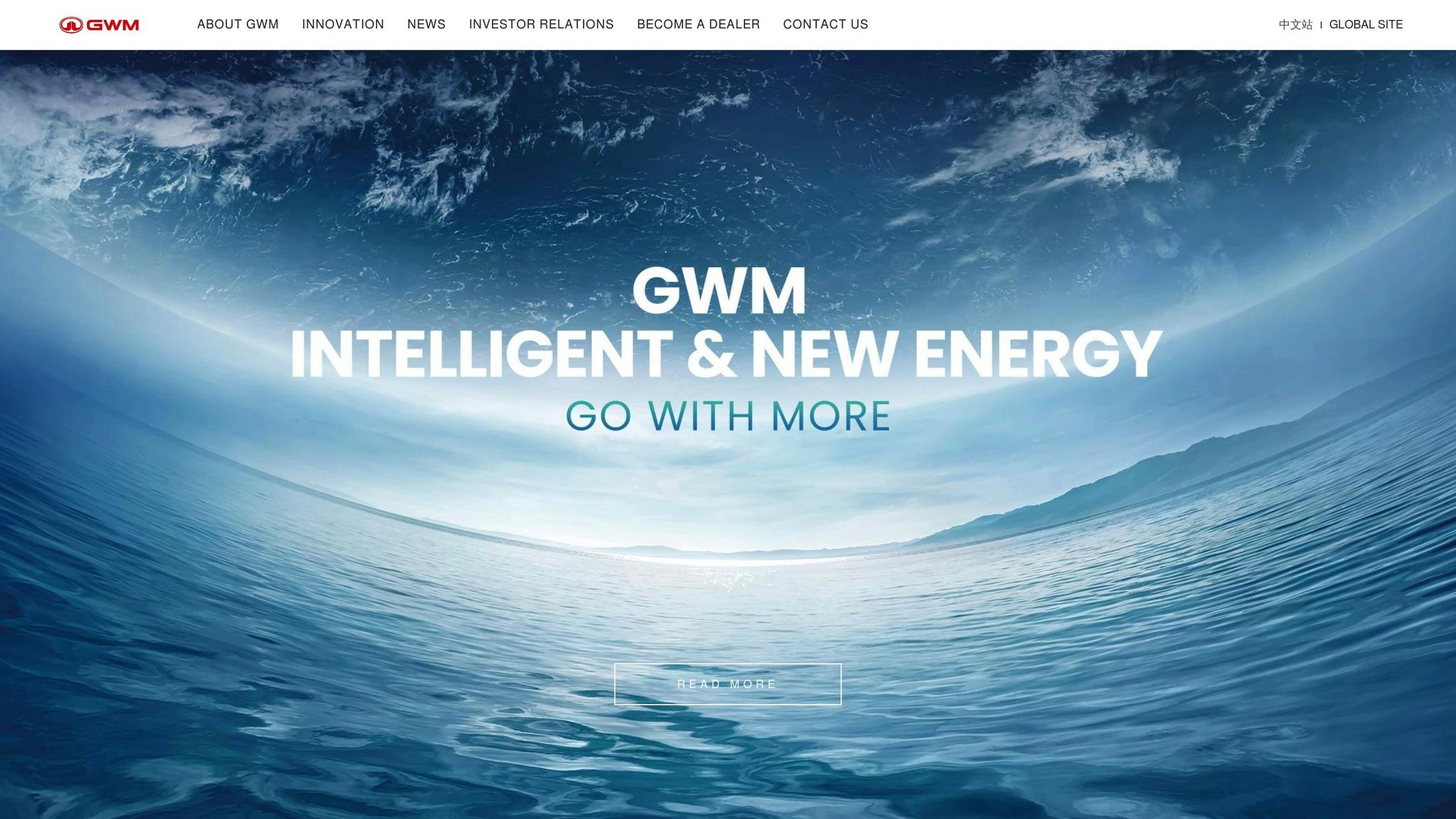
GWM is taking a calculated approach to its growth in Africa, focusing on building stable operations rather than chasing rapid expansion. Unlike BYD’s swift dealership growth or GAC’s development of strategic hubs, GWM is opting for a steady, long-term strategy. As the leading Chinese automaker in South Africa [35,36], GWM is now setting its sights on expanding its reach across the continent.
Revisiting Local Production for Growth
After establishing a strong market presence, GWM is reevaluating its manufacturing strategy in Africa. Conrad Groenewald, GWM’s COO, shared the company’s plans:
"Now that we’ve achieved economies of scale, we will revisit feasibility studies in the next 12 months".
Previously, GWM found localizing production unfeasible due to the affordability of Chinese imports. However, the company is now exploring the possibility of setting up a semi-knockdown plant in South Africa [4,36,37]. This shift could lower production costs and potentially enable exports to nearby markets.
PHEVs: A Practical Solution for Africa
Understanding Africa’s infrastructure limitations, GWM is focusing on plug-in hybrid electric vehicles (PHEVs) as a practical solution. In 2024, new energy vehicles – including hybrids and fully electric models – made up 3% of new car sales in South Africa, more than double the previous year’s share [4,35,36]. GWM introduced the HAVAL H6 GT Plug-in Hybrid Electric Vehicle in June 2025, a model designed for both performance and practicality. It boasts 321 kW (430 hp), 762 Nm (562 lb-ft), and accelerates from 0–62 mph in 4.9 seconds. With a combined range of up to 1,000 km and an electric-only range of 180 km, it offers impressive versatility.
Conrad Groenewald highlighted the vehicle’s appeal:
"a breakthrough in performance and practicality…The new H6 GT PHEV delivers the kind of power that gets hearts racing, with the efficiency and innovation South Africans expect from tomorrow’s mobility. It’s a true statement of modern driving – stylish, smart and exhilarating".
Pricing for Accessibility
GWM is making plug-in hybrids and EVs accessible by pricing them under $22,500 (400,000 rand). For those seeking luxury, models like the H6 GT 1.5T ULTRA LUXURY 4WD PHEV are available at R799,900.
Strengthening Government Ties
To support its long-term growth, GWM is building relationships with African governments. At the China-Africa Cooperation Forum Summit in September 2024, GWM Chairman Jack Wei met with Egyptian Prime Minister Mostafa Madbouly to discuss investment opportunities. The Prime Minister commended GWM’s contributions to Egypt, while Jack Wei emphasized shared goals:
"The Egyptian government is accelerating its energy transition efforts, which is critical for both social and automotive investment environments. GWM and Egypt share common goals. Based on local market demand and the government’s vision for transitioning to new energy, GWM aims to provide Egyptian customers with a new product and service experience".
Expanding Manufacturing in Africa
These government partnerships are paving the way for GWM’s manufacturing plans. In September 2024, GWM signed a Memorandum of Understanding with Senegalese distributor CCBM to establish a knock-down (KD) factory in Senegal. This facility aims to introduce advanced technologies and management practices while supporting the local automotive industry’s growth.
Investing in Communities and Education
GWM’s strategy goes beyond selling vehicles. The company actively engages with South African communities to promote new energy vehicles and raise awareness about the energy transition. It has also donated DHT transmissions and battery pack assemblies to local schools, helping to build expertise in hybrid technology.
Advantages and Disadvantages
Each manufacturer brings its own strengths and faces unique challenges in the African market.
BYD’s Market Position
BYD’s impressive scale is evident with its 150 GWh battery capacity and 626,000 vehicles sold in Q1 alone. The company’s planned US$4.5 billion R&D investment in 2024 highlights its commitment to competitive pricing and technological advancements.
That said, BYD faces hurdles in building brand recognition outside of China, which means it needs to invest heavily in marketing efforts. Additionally, concerns about product quality and perception among African consumers present barriers. The company’s reliance on government subsidies and policies also leaves it vulnerable to changes in political environments.
GAC’s Strategic Approach
GAC is focusing its efforts on Ethiopia, leveraging strong government support and a partnership with the Huajian Group. This approach provides immediate access to distribution networks and local expertise, easing its entry into the market.
However, GAC’s relatively small market presence compared to competitors like BYD and GWM is a challenge. While its targeted strategy allows deeper penetration in specific areas, it could slow broader growth across the continent and increase reliance on the success of its chosen partners.
GWM’s Balanced Strategy
GWM benefits from its established leadership in South Africa and its focus on plug-in hybrid vehicles (PHEVs). By pricing its vehicles under US$22,500, GWM makes its models accessible to Africa’s growing middle class.
On the flip side, GWM’s slower expansion pace and heavy dependence on the South African market could pose risks. This narrow focus might allow competitors to gain ground in other key regions.
These differing strengths and weaknesses highlight the varied strategies each company employs to navigate the market.
| Company | Key Strengths | Major Weaknesses | Market Approach |
|---|---|---|---|
| BYD | Large-scale production (150 GWh battery capacity), strong R&D investment (US$4.5B), diverse product range | Limited brand recognition outside China, quality concerns, reliance on subsidies | Aggressive dealership expansion |
| GAC | Strategic partnerships, focused market entry, strong government ties | Small market presence, slower overall growth, reliance on partners | Hub-based expansion through Ethiopia |
| GWM | Market leadership in South Africa, focus on PHEVs, affordable pricing | Slower growth, reliance on South African market, conservative expansion | Gradual growth with potential local production |
Infrastructure and Charging Challenges
All three companies face the same issue: Africa’s limited charging infrastructure and unreliable power supply. This remains a significant obstacle to widespread EV adoption.
Competitive Pricing Pressures
Affordability is a key factor in this market. Greg Cress from Accenture explains:
"As long as they remain affordable from an up-front cost perspective, they will be differentiated against legacy brands offering similar specifications".
Government Relations Impact
Strong relationships with governments and favorable policy frameworks are critical for success in Africa. BYD and GWM have made significant investments in this area, while GAC is leveraging its existing partnerships. However, shifting political priorities and unpredictable government policies continue to create uncertainty for all three manufacturers.
These insights reveal how each company is tailoring its approach to meet Africa’s unique market challenges.
Summary
Chinese electric vehicle (EV) manufacturers are making waves in Africa, reshaping the region’s automotive industry with bold strategies. BYD stands out with its aggressive expansion, GAC is steadily strengthening its foothold, and GWM is building on its established presence by introducing plug-in hybrids priced under $22,500.
Recent data highlights a growing trend in South Africa’s new energy vehicle market, with sales now making up 3% of total vehicle sales. This growth is steering the market toward a crucial 10% share, a tipping point for accelerated adoption.
Strategic Market Positioning
Leading players are addressing Africa’s unique challenges while recognizing its potential. BYD’s Steve Chang underscored the importance of the region, particularly South Africa:
"South Africa is actually one of the most important automotive markets in the southern Hemisphere. It’s probably the biggest market in all of Africa, so it’s a market that we have to look at and see how we can develop the market".
Economic Impact and Future Outlook
The strategies of these manufacturers are creating significant economic opportunities. In 2024, South Africa produced 600,000 cars, and projections suggest this could rise to 1.5 million by 2035. Local assembly is expected to lower costs and fuel further growth. These developments highlight how strategic investments are shaping the future of Africa’s automotive market.
Recommendations for Stakeholders
To capitalize on these trends, stakeholders should focus on the following:
- For Consumers: Plug-in hybrids provide an accessible entry point into electric mobility.
- For Governments: Expanding charging infrastructure and encouraging local assembly through incentives can speed up the EV transition.
- For Industry Players: Maintaining affordability is key. As Greg Cress of Accenture points out:
"As long as they remain affordable from an up-front cost perspective, they will be differentiated against legacy brands offering similar specifications".
These efforts collectively build the foundation for a thriving EV ecosystem in Africa, driving economic growth and transforming transportation across the continent.
FAQs
How are Chinese EV manufacturers like BYD, GAC, and GWM tackling the lack of charging infrastructure in Africa?
Chinese electric vehicle (EV) makers like BYD, GAC, and GWM are tackling Africa’s limited charging infrastructure with creative approaches. They’re not just selling cars – they’re building solutions. For instance, BYD is growing its dealer network and introducing hybrid models like the Sealion 6 PHEV, which offers the convenience of reduced dependence on charging stations. This makes their vehicles more practical for regions with inconsistent energy access.
These companies are also teaming up with local partners to develop charging networks, ensuring their vehicles fit the needs of African markets. By blending smart technology with targeted investments, they’re making EVs a more realistic option for drivers across the continent.
How are BYD, GAC, and GWM tailoring their electric vehicles and strategies to meet the needs of the African market?
BYD, GAC, and GWM are working hard to grow their dealership networks throughout Africa, aiming to make their vehicles easier to access for local buyers. For instance, BYD has ambitious plans to expand its presence in South Africa by opening more dealerships over the next few years. This move is part of a broader strategy to meet the rising interest in electric vehicles while establishing a solid foothold in the region.
At the same time, these automakers are rolling out budget-friendly EV models tailored to fit the economic realities and infrastructure of African markets. They’re also customizing their vehicles to handle challenges like uneven roads and diverse climate conditions, ensuring their cars are both dependable and practical for everyday use. These efforts not only align with Africa’s shift toward electric mobility but also help these brands gain trust and visibility across the continent.
How are Chinese EV manufacturers like BYD, GAC, and GWM impacting Africa’s economies and job market through their expansion?
The growing presence of Chinese electric vehicle (EV) manufacturers in Africa is sparking economic growth and opening up new job opportunities. Companies such as BYD, GAC, and GWM are making significant investments in local manufacturing plants, dealership networks, and infrastructure. These initiatives are not only providing employment but also introducing advanced technology to local markets.
This wave of investment is helping African economies diversify while encouraging the shift toward electric mobility. By building partnerships and supporting eco-friendly projects, these manufacturers are playing a role in long-term economic progress and positioning Africa as an emerging force in the global EV market.


